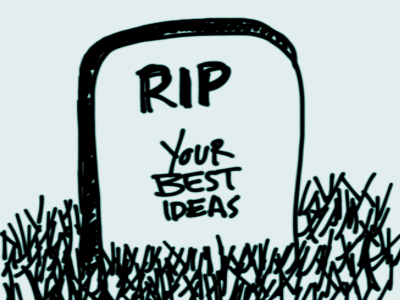 Whether assessing a new investment opportunity or solving one of the world’s most pressing health and wellness problems, it is essential to study the pitfalls that lie ahead. Optimists tend to be drawn to these entrepreneurial ventures but few can recognize their rose-colored glasses until it is too late. Research in behavioral psychology suggests a mental exercise dubbed a “pre-mortem” as an antidote for such overconfidence.
Whether assessing a new investment opportunity or solving one of the world’s most pressing health and wellness problems, it is essential to study the pitfalls that lie ahead. Optimists tend to be drawn to these entrepreneurial ventures but few can recognize their rose-colored glasses until it is too late. Research in behavioral psychology suggests a mental exercise dubbed a “pre-mortem” as an antidote for such overconfidence.
Over 50% of businesses fail in the first four years. Many that linger past that point are alive in name only. Yet very few entrepreneurs actually believe they have a less than 50% chance of success. They are convinced that those statistics only apply to the other person’s ideas.
The concept of a pre-mortem was designed to help overcome these natural human tendencies to ignore real threats to a business plan. A related concept, the postmortem, or autopsy, was coined by the medical community to determine the cause of death. Sometimes we wish for hindsight’s clear vision beforehand. If failure is the most likely outcome, the earlier you can recognize it and change course, the better. The pre-mortem looks into the future and attempts to predict what a business venture autopsy will reveal.
In his book The Power of Intuition, Gary Klein offers a five-step exercise to help teams overcome the overconfidence bias. Research has found that people are more clearly able to understand and describe the risks of a venture when they conceive of the failure of their project as certain. If failure is only a contingency, the hopes and aspirations of all involved will neuter any attempts to assess the most dangerous risks.
Before you can begin, make sure that everyone on the team is fully familiar with the new venture that will be assessed for failure. This exercise may require an initial presentation and some additional reading so that all participants have a full understanding of the issues involved. Schedule about an hour in a conference room. Each person will need several sheets of paper.
When all arrive, begin by claiming to look into a crystal ball to see the outcome of this new venture. Oh no, the future is cloudy but disastrous. The project is a complete and total failure. Your partners and your clients are upset. No one on the team is talking to one another. But your crystal ball will not reveal how this happened. The question of the hour is “What could have caused this?” Ask each team member to suggest 10 reasons for the failure.
In the second step, each member of the team quietly takes three minutes to write down all the reasons they think failure occurred. This decentralized free association will produce many interesting ideas about how this venture may have failed.
All the participants must be given the freedom to share ideas that in other situations would be considered impolite. Too many teams get stuck in a psychological state of groupthink where opposing feelings of loyalty and fear both lead to conformity of ideas. The most pressing challenges are not likely to be shared in an environment that lacks the freedom to speak them.
The third step involves repeatedly going around the room as each person shares one item on their list and a facilitator records these ideas until all have consolidated their lists into one master list.
The fourth step is to prioritize the ideas that grew out of the collective brainstorm. Which two or three appear most threatening to the group? Have each person write these down independently before sharing as a group. Sometimes, the most polished and eager public speakers can be so convincing that others in the group neglect to do their own reasoning.
The final step is to reassess the new business venture. Are the opportunities worth the threats involved? Are there ways to strengthen the plan to forestall fiasco?
A pre-mortem has been proven to be effective because it involves a shift in perspective. It’s the difference between asking “what could go wrong” and “what has gone wrong.” The first is a theoretical future perspective, and the second is a historical fact.
An additional, but equally important, benefit from this type of analysis is that it allows team members to be valued for their unique perspectives and observations. Building a shared vision and ownership is vital for developing the most effective teams. Allowing this team to effectively question their own assumptions helps to counter any preconceived ideas.
Are you willing to send your best ideas to the grave?